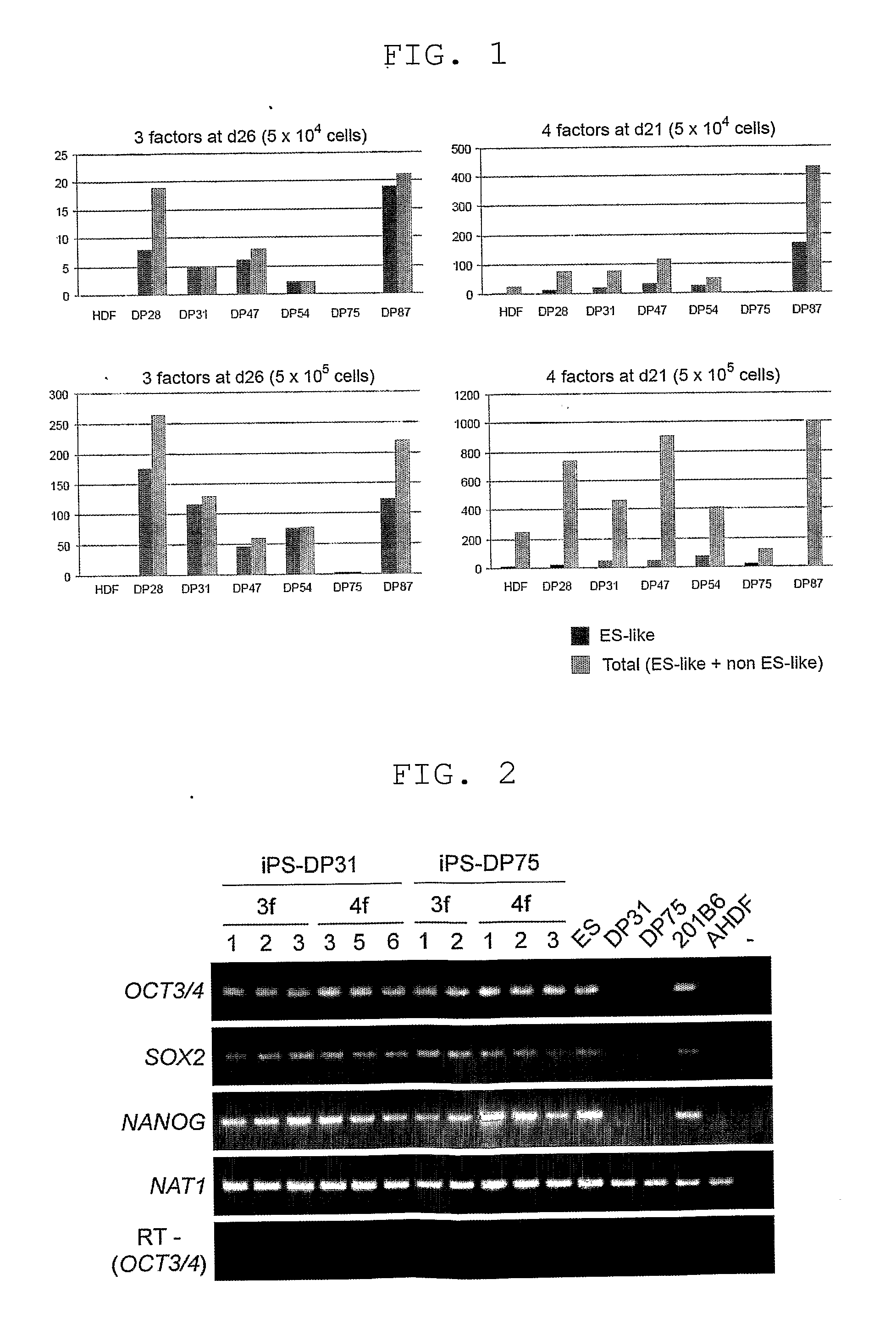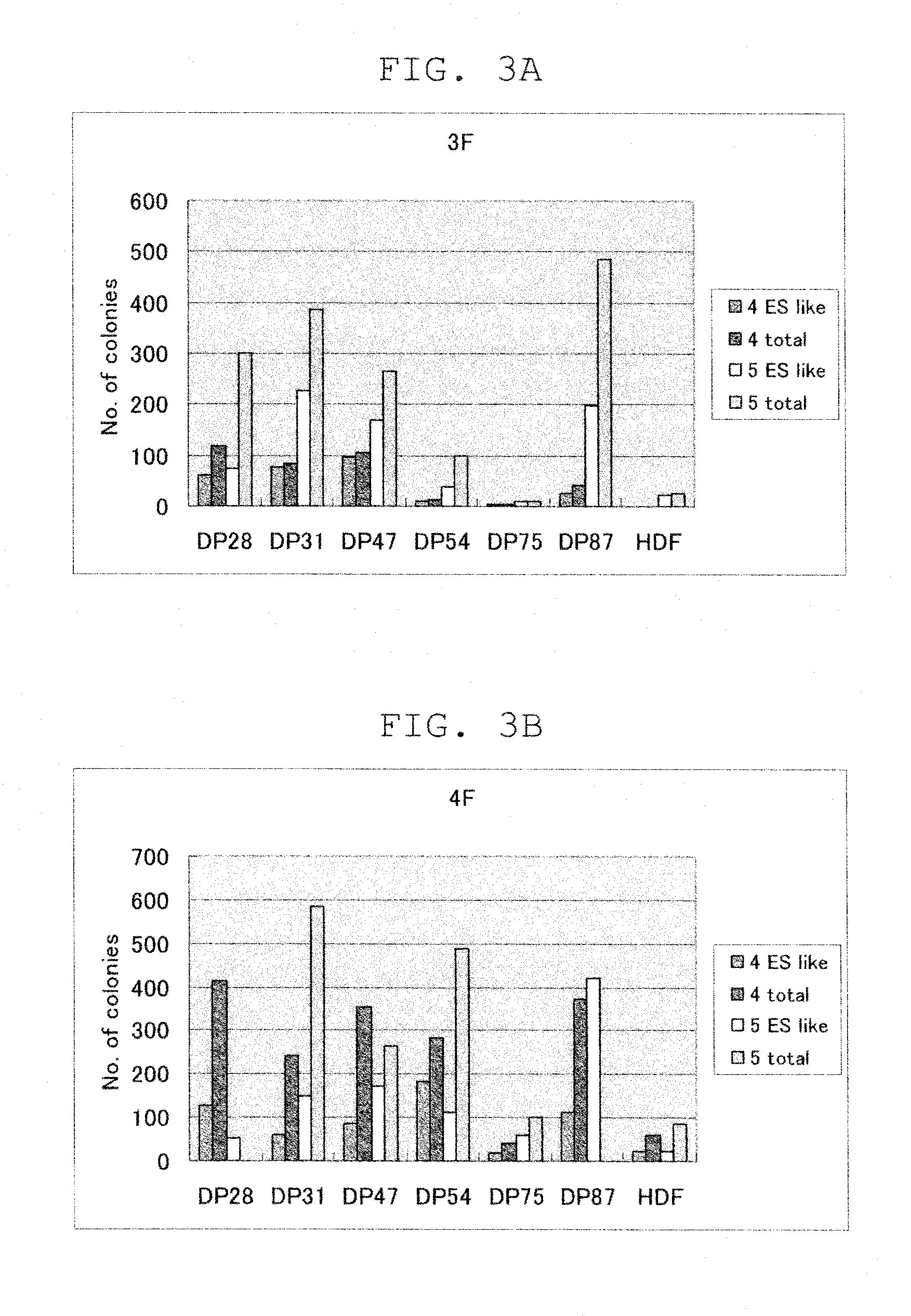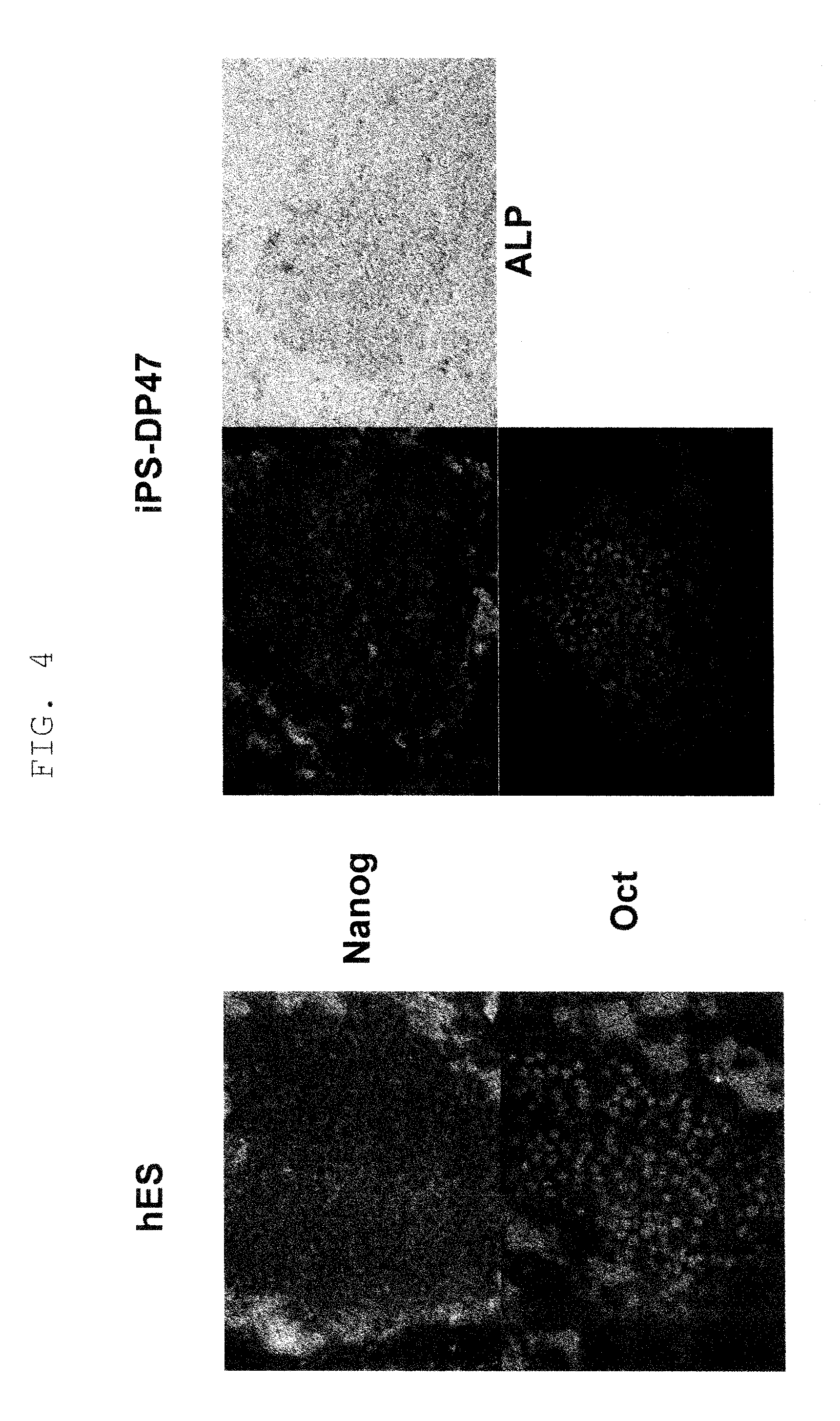Efficient method for establishing induced pluripotent stem cells
- Summary
- Abstract
- Description
- Claims
- Application Information
AI Technical Summary
Benefits of technology
Problems solved by technology
Method used
Image
Examples
example 1
Establishment of iPS Cells from Human Dental Pulp Stem Cells (1)
Experimental Procedures
[0067]Dental pulp stem cells were prepared from teeth extracted from persons at 12 to 24 years of age (DP28, DP31, DP47, DP54, DP75, DP87). Specifically, pulp tissue was extirpated from each wisdom tooth extracted from an orthodontic patient or a patient with wisdom tooth periodontitis, and shredded using ophthalmologic Cooper scissors into about 1 to 2 mm tissue pieces, after which the tissue pieces were treated with collagenase type I (1 mg / ml) at 37° C. for 0.5 to 1 hour. This was cultured in a mesenchymal stem cell basal medium (produced by Lonza) to establish a cell line of dental pulp stem cell. For control, adult human dermal fibroblasts (HDF) from a 36-year-old person were also prepared. These cells were allowed to express the mouse ecotrophic virus receptor Slc7a1 gene using lentivirus as directed in Cell, 131, 861-872 (2007).
[0068]Four (Oct3 / 4, Sox2, Klf4, c-Myc) or three (Oct3 / 4, Sox2, ...
example 2
Establishment of iPS Cells from Human Dental Pulp Stem Cells (2)
Experimental Procedures
[0074]iPS cells were established by introducing 4 or 3 factors to the same dental pulp stem cells in the same manner as those in Example 1.
[0075]For the cells incorporating the 4 factors, the colonies that had emerged were counted when ES-like colonies could be picked up for each line after retroviral infection. The colonies were morphologically evaluated and counted in two types: ES-like cells (iPS cells) and non ES-like cells (non-iPS cells). The results are shown in FIG. 3.
[0076]In five of the 6 lines of dental pulp stem cells incorporating the 4 factors, ES-like colonies were obtained at 2 to 19 times higher efficiencies when the cell count was 5×105 cells, and at 3 to 9 times higher efficiencies when the cell count was 5×104 cells, compared to HDF (FIG. 3B).
[0077]For the cells incorporating the 3 factors, in 5 of the 6 lines of dental pulp stem cells, ES-like colonies were obtained at 2 to 10...
example 3
Stem Cell Marker Expression in iPS cells
Experimental Procedures
[0079]The iPS cells obtained in Example 1 were plated onto mitomycin C-treated SNL feeder cells and incubated for 5 days. The cells were fixed with 4% paraformaldehyde and permeabilized and blocked with PBS containing 5% normal goat serum, 1% BSA and 0.2% TritonX-100. The expression of stem cell markers (SSEA1, SSEA3, TRA-1-81, NANOG) was examined by immunocytochemistry. As primary antibodies, anti-SSEA1 (1:100, Developmental Studies Hybridoma Bank of Iowa University), anti-SSEA3 (1:100, a gift from Dr. Peter Andrews), TRA-1-81 (1:100, a gift from Dr. Peter Andrews) and anti-NANOG (1:20, R&D systems) were used. Secondary antibodies used were as follows; Alexa 488-labeled anti-mouse IgM (1:500, Invitrogen), Cy3-labeled anti-rat IgM (1:500, Jackson Immunoresearch) and Alexa-546-labeled anti-goat IgG (1:500, Invitrogen). Nuclei were stained with Hoechst 33342 (Invitrogen). The results are shown in FIG. 5. All of iPS clones ...
PUM
 Login to View More
Login to View More Abstract
Description
Claims
Application Information
 Login to View More
Login to View More - R&D
- Intellectual Property
- Life Sciences
- Materials
- Tech Scout
- Unparalleled Data Quality
- Higher Quality Content
- 60% Fewer Hallucinations
Browse by: Latest US Patents, China's latest patents, Technical Efficacy Thesaurus, Application Domain, Technology Topic, Popular Technical Reports.
© 2025 PatSnap. All rights reserved.Legal|Privacy policy|Modern Slavery Act Transparency Statement|Sitemap|About US| Contact US: help@patsnap.com



